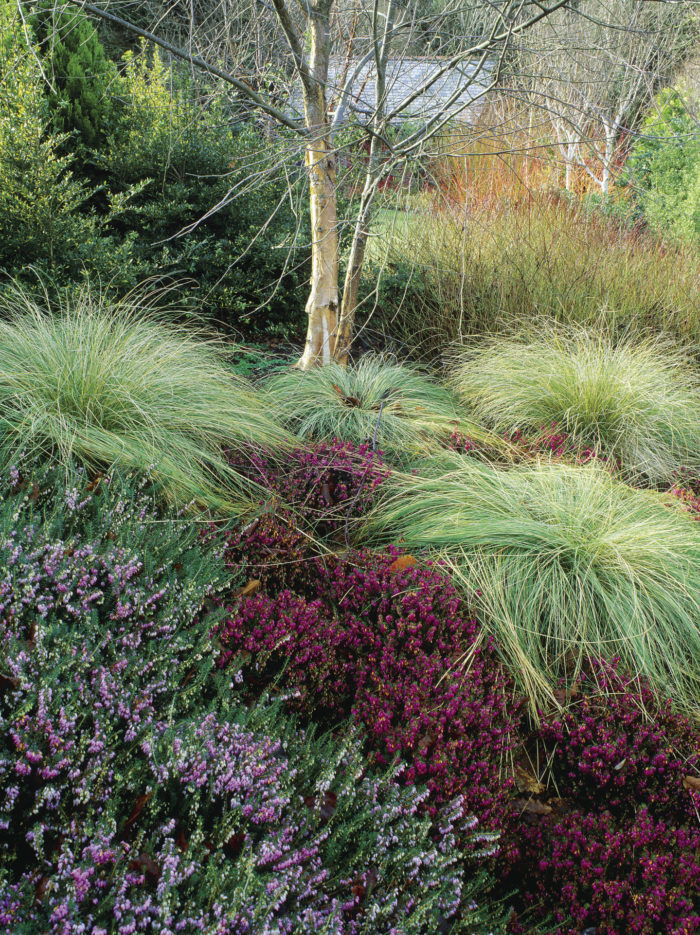
The staff at your local garden center works hard to assemble eye-catching displays of colorful perennials, artfully arranged succulents, and architectural grasses. But the ground-cover section is likely an unremarkable, out-of-the-way aisle, lined with uniformly green flats. Who could blame you for passing it by?
Don’t let the second-class nursery status fool you. Well-chosen ground covers can serve a variety of functions in the garden. So skip the overworked varieties that everyone uses, and think of ground-hugging layers as an opportunity to incorporate bold color, subtle fragrance, and seasonal interest into any garden design.
Mix ground covers with taller plants to hold a slope
If your garden includes a hillside, planting a mix of trees, shrubs, and ground covers can be an effective erosion-control strategy. The overlapping tiers of branches and leaves break up the energy of rainwater before it hits the ground, while the interlocking layers of roots help bind soil together and take up excess moisture. To avoid overwatering the slope, choose plants that require minimal supplemental water.
From a design standpoint, choosing plants in a variety of heights, textures, and shapes creates a more pleasing effect than covering the area with only one or two plant varieties. I typically include low-water perennials and grasses for summer and fall interest, combined with evergreen ground covers with winter berries, flowers, or foliage color to extend seasonal appeal. I’m particularly fond of those that will billow over and soften retaining walls. Some of my favorite choices are ‘Coral Beauty’ cotoneaster (Cotoneaster ‘Coral Beauty’, USDA Hardiness Zones 7–8) and common bearberry (Arctostaphylos uva-ursi, Zones 2–6).
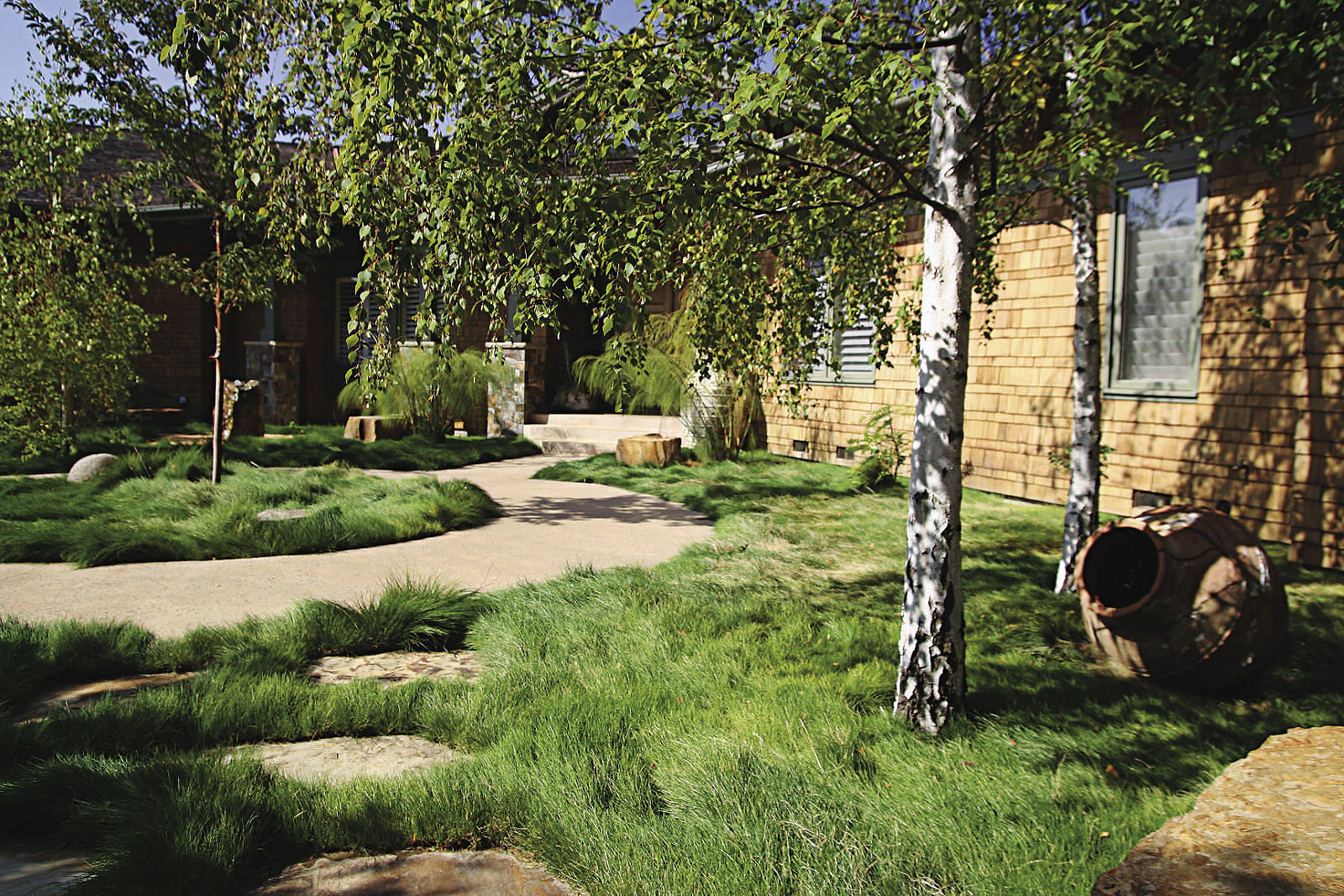
Take back some turf
While nothing completely mimics the durable perfection of a good old-fashioned turf lawn, many ground covers are sturdy enough to withstand at least occasional foot traffic and require significantly less water and maintenance than grass.
To determine the best options for your garden, establish your criteria before visiting the nursery. If your lawn will have little to no foot traffic, you will discover that you have more possibilities. Try Roman chamomile (Chamaemelum nobile, Zones 6–9) or blue star creeper (Isotoma fluviatilis, Zones 5–9) for an emerald green mat that stays short without mowing; spring flowers add a pop of seasonal color.
For something that combines the refined appearance of turf with considerably less maintenance, consider a native fescue blend. Typically grown from seed and occasionally available in sod form, native mixes (sometimes referred to as “no-mow” blends) are crafted to use less water and to tolerate a range of cultural conditions. Many will handle more shade than traditional sods, making them a good choice for transitional areas. They can be mowed or left unmowed for an informal meadow effect.
The size of the area to be covered is another important consideration. Most ground covers are planted from flats or plugs and take time to fill in. Vigilant weeding is a must while new ground cover establishes. If you will be planting a large area, spare yourself the extra maintenance and consider hydroseeding or broadcast-seeding a native mix, which will typically fill in in less than two months.

Add color and texture between pavers
Planting ground covers between stepping-stones is a time-honored design strategy to dress up a plain pathway and connect it to the surrounding garden. Once again, maintenance should be part of your selection criteria. Fast-growing ground covers will quickly obscure the pavers and require regular cutting back. Slower spreaders or those naturally on the petite side are a better choice. To add drama, I turn to sedums such as bright green ‘Angelina’ (Sedum rupestre ‘Angelina’, Zones 6–9) to highlight gold-colored pavers.
It can be difficult to irrigate efficiently between pavers, leading some gardeners to avoid planting entirely. Rather than filling every joint with greenery, choose an inorganic medium, such as gravel or decomposed granite, and add in a few small plants. I like small-scale grasses or mounding plants, like black mondo grass (Ophiopogon planiscapus ‘Nigrescens’, Zones 6–11) or heucherella (× Heucherella cvs., Zones 3–8).

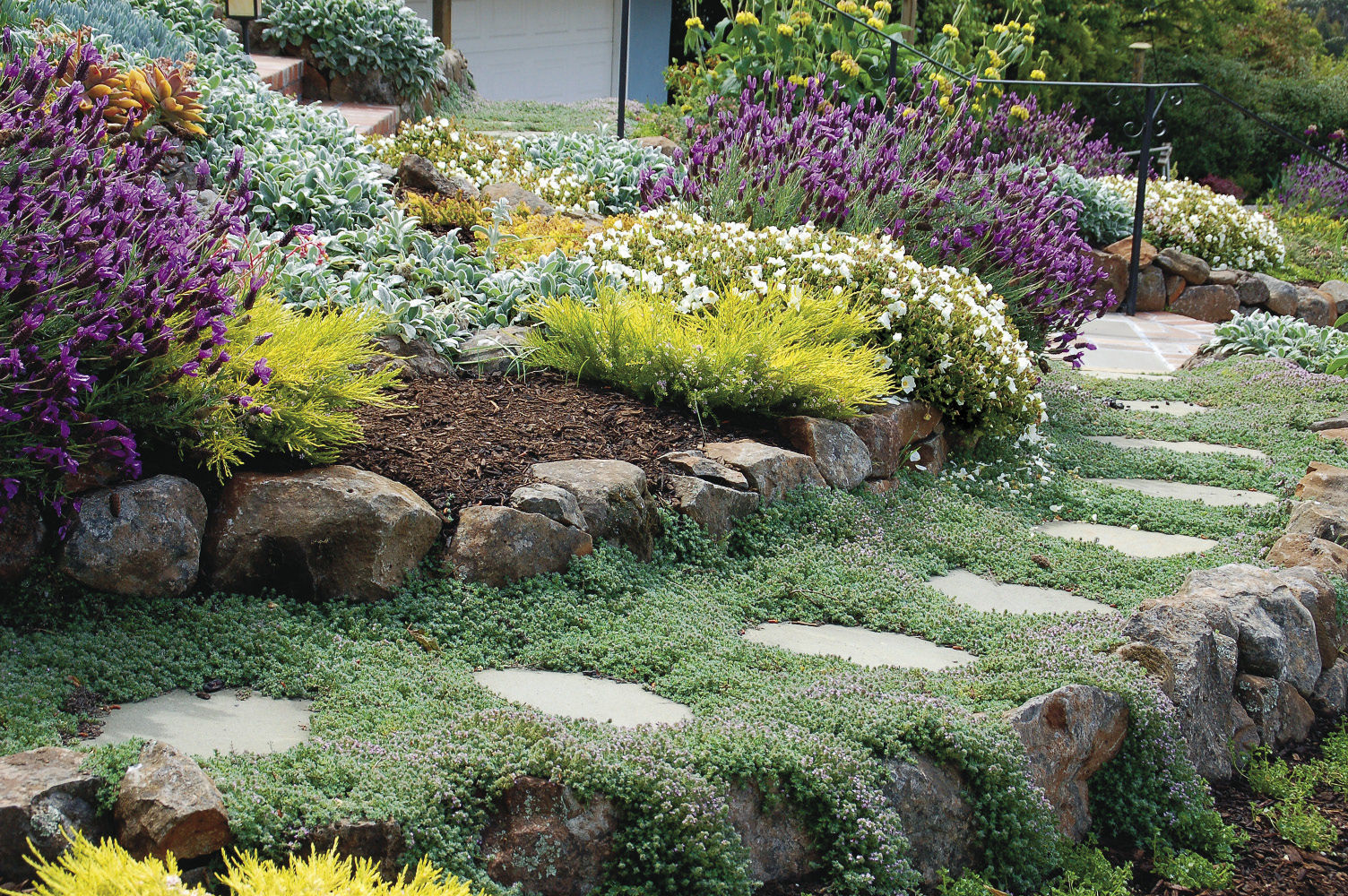
Try taller textures under trees
Planting under trees is where most of us fall back on tried-and-true varieties like ivy, vinca, or pachysandra. But low-growing, unvarying ground covers like these tend to visually strand a tree, disconnecting it from the rest of the garden. Use, instead, a ground cover that is taller and looser, which helps bridge the gap between the ground and the tree’s canopy.
Try plants with dark-colored or variegated foliage to add a bit of garden drama. Colorful fruit or flowers lend seasonal sparkle to a shady spot. Just remember that any plant that you choose must have the ability to handle shade and root competition.
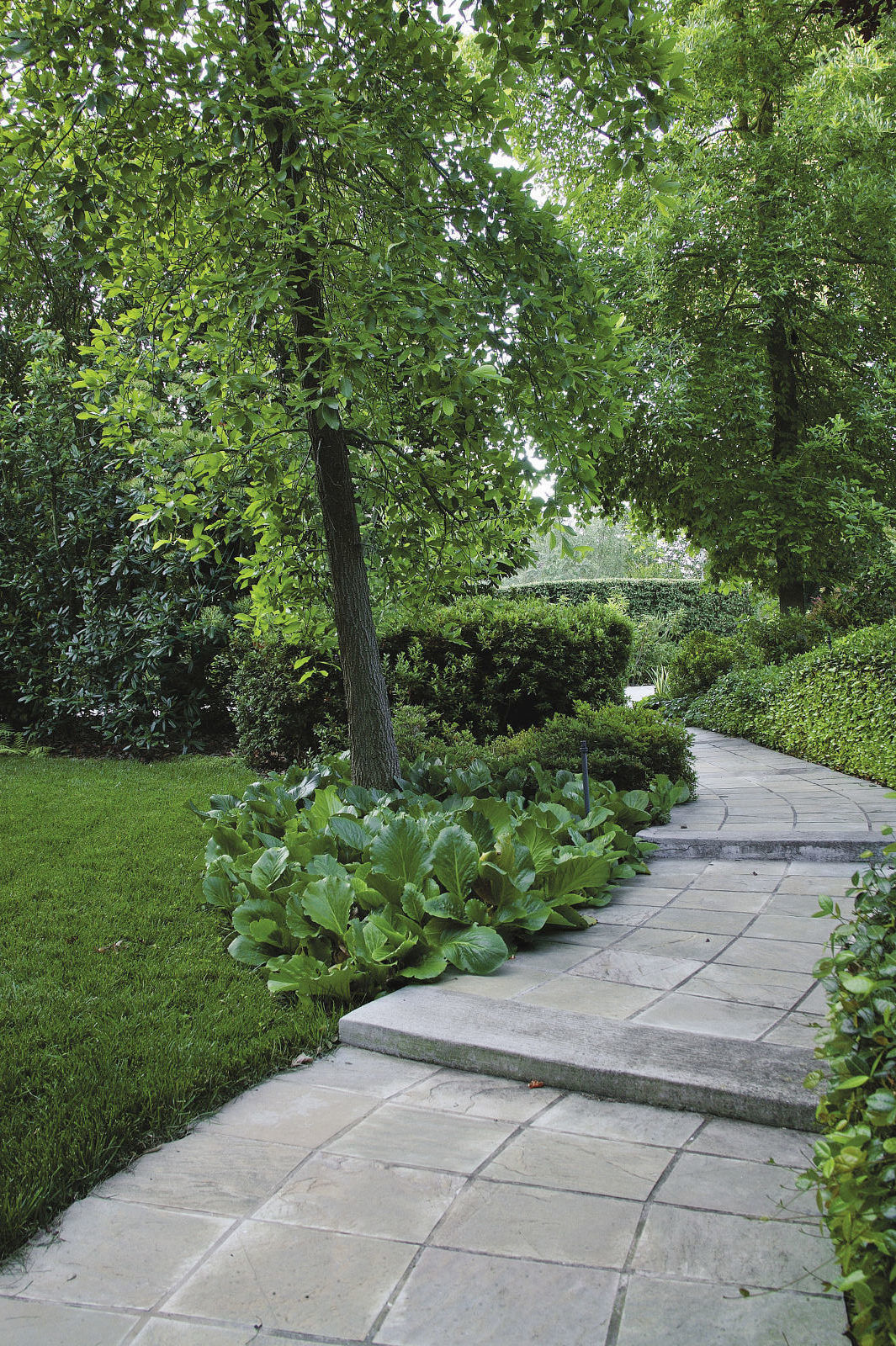
Pulling a design together
Low growers with small leaves tuck neatly into awkward spaces, such as the acute angles created when multiple curves converge. Choose slow-spreading varieties that can easily be trimmed to keep your carefully planned lines from being obscured.
Ground covers can also be used to add color and fragrance in unexpected ways. I often add small patches of chamomile or thyme close to pathways, where they are well positioned to release their herbal aromas when stepped on.
In small spaces, ground covers can offer a subtle way to carry a color theme through the garden. Where giant pops of red or chartreuse would overwhelm, a touch of ground-level color may be all that’s needed.
When it comes to solving a design dilemma or adding an extra layer of interest to a garden, ground covers are my go-to solution. Scan your garden with a critical eye, and you may find many opportunities to add some hardworking, low-growing plants to your own designs.
—Susan Morrison is a garden designer and writer and the owner of Creative Exteriors Landscape Design in Concord, California.
PLANT PICKS
Five great ground covers
While each region will have its own palette of appropriate ground covers, here are a few of my favorites.
1. Thyme (Thymus spp. and cvs., Zones 5–9)Delicate foliage, summer flowers, and a delicious fragrance that Rudyard Kipling wrote “smells like dawn in paradise”—what’s not to love about this ground-cover mainstay? There are many cultivars of thyme available, so make sure to choose one with the height and spread appropriate for your space. |
 |
2. Sedum (Sedum spp. and cvs., Zones 4–9)Cold hardy and tough, sedum is an easy way to add color—from subtle to bold—to a garden plan. I’m particularly fond of ‘Cape Blanco’ and ‘Angelina’, which look spectacular draping over a retaining wall. |
 |
3. Silver carpet (Dymondia margaretae, Zones 9–11)More and more, gardeners want the unifying swath of color that turfgrass provides but in shades other than green. Silver carpet fits the bill, spreading quickly to create a drought-tolerant, low-growing evergreen lawn. |
 |
4. ‘Sunshine’ creeping speedwell (Veronica repens ‘Sunshine’, Zones 7–9)The cheerful, chartreuse leaves of ‘Sunshine’ creeping speedwell are perfect for brightening a spot that is too green in the garden. Speedwell loses its leaves in fall and prefers mild temperatures, making it well suited for cool climates or lightly shaded areas between stepping-stones. |
 |
5. Fire Spinner® ice plant (Delosperma ‘P001S’, Zones 5–10)If you like a shot of brilliant color in your spring garden, look no further than Fire Spinner® ice plant. Forming an evergreen mat of apple green foliage, it blazes in spring with blooms in shades of orange, pink, and yellow. |
 |
Fine Gardening Recommended Products

Razor-Back Potato/Refuse Hook
Fine Gardening receives a commission for items purchased through links on this site, including Amazon Associates and other affiliate advertising programs.

DeWalt Variable-Speed Cordless Reciprocating Saw with 6-Piece Saw Blade Set
Fine Gardening receives a commission for items purchased through links on this site, including Amazon Associates and other affiliate advertising programs.
- 18.31 x 6.13 x 4 inches
- 1-1/8-inch stroke length
- Variable speed trigger with 0-3000 spm
- DW4856 Metal/Woodcutting Reciprocating Saw Blade Set, 6-Piece

SHOWA Atlas 370B Nitrile Palm Coating Gloves, Black, Medium (Pack of 12 Pairs)
Fine Gardening receives a commission for items purchased through links on this site, including Amazon Associates and other affiliate advertising programs.

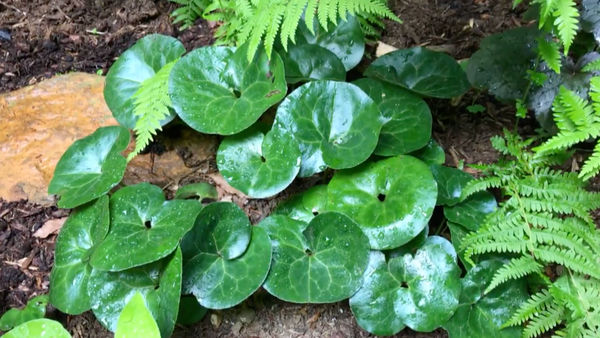
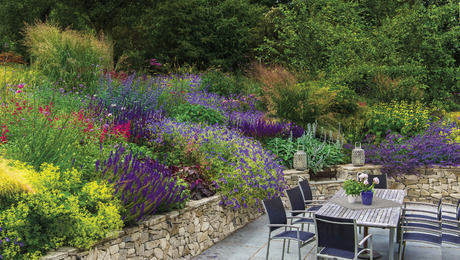
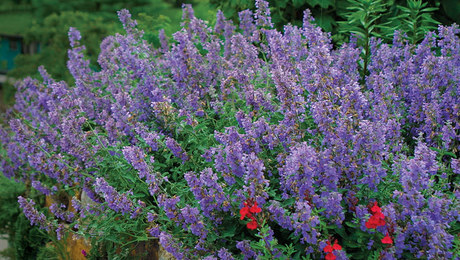
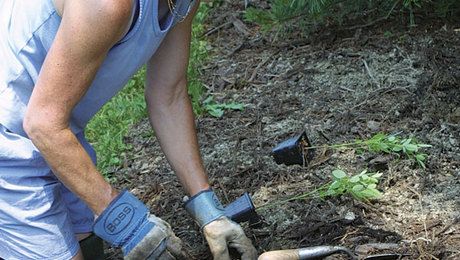













Comments
I am very interested in studying landscape design. I decided to independently equip a garden near our house. I have a lot of ideas, for example, on https://masterbundles.com/best-dungeon-floor-texture/ I will find and take Best Dungeon Floor Texture Images to use to improve the asphalt. Now there really are not even paths - in the ground in some places there are pieces of old tiles. Also, I will definitely add garden gnomes and plant a lawn.
Log in or create an account to post a comment.
Sign up Log in